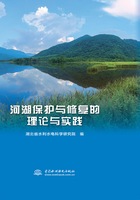
1 Introduction
The stability of soil aggregates can affect water movement and storage in soils,and it can also influence soil aeration,erosion,and biological activities as well as crop growth.High and sustainable soil aggregate stability is thus an important characteristic for preserving soil productivity and restraining soil erosion and degradation(Amézketa,1999).Macro-aggregate stability is often considered as a key index in studies of soil erodibility or soil degradation(Barthès and Roose,2002;Cammeraat and Imeson,1998;Idowu,2003;Yan et al.,2008),and micro-aggregate stability is also used to estimate or predict soil erosion and surface runoff(Darboux and Le Bissonnais,2007).The weak water stability of micro-aggregates has become a major cause of increasing water erosion on agricultural lands in some areas of Africa(Opara,2009).
The stability of soil macro-and micro-aggregates can be affected by dozens of different soil intrinsic factors and depends on soil formation processes,biological factors,agricultural management and climate(Amézketa,1999).Improving our understanding of these processes is fundamental in order to take action to maintain macro-and micro-aggregate stability in soils.Some researchers have found that soil intrinsic factors—such as the content of clay,organic matter,and oxides—contributed to the cohesive strength of aggregates through binding processes in their selected soils(Levy and Mamedov,2002;Wuddivira et al.,2006).Soil organic matter is a crucial component for aggregate formation and stabilization(Boix-Fayos et al.,2001;Six et al.,2004;Noellemeyer et al.,2008),and is positively correlated with macro-aggregate distribution(Green et al.,2005;De Gryze et al.,2008;Huang et al.,2010).Boix-Fayos et al.(2001)observed that the macro-aggregate stability depends on the organic matter content when this was greater than 5%~6%,and Huang et al.(2010)showed that the percentages of>0.25mm water-stable aggregates correlated well with the organic matter contents of eroded ultisols.However,some researchers have shown that soils with higher contents of Fe and Al oxides tend to have more stability for macro-and micro-aggregates(Goldberg et al.,1990;Pinheiro-Dick and Schwertmann,1996).Igwe et al.(1995,2009)and Li et al.(2005)showed that in some Inceptisols and ultisols the loworganic-matter content did not affect the formation and stabilization of aggregates.They claimed that sesquioxides were ultimately responsible for aggregate formation and stabilization,and their contributions to aggregate formation could vary greatly.There has since been discussion as to which particular element in the sesquioxide group was responsible for aggregate formation.Among sesquioxides,Al was found to be more effective than Fe as an aggregating agent(Keren and Singer,1990;Mbagwu and Schwertmann,2006).However,Arca and Weed(1966)indicated that aggregation in oxide-rich soils was more strongly correlated with free Fe oxide content than other soil properties.Other researchers identified oxalate-extracted oxides(Fe,Al)as heavily involved in aggregate formation in some Oxisols,Inceptisols,and Andisols from Brazil,Cameroon,and Chile(Pinheiro-Dick and Schwertmann,1996;Huygens et al.,2005).
Ultisols(more commonly known as〝red soils〞)cover approximately 1.14 million km2 in southeastern China and are the dominant soil type in South American and Southeastern Asia.Improper land use and soil management,undulating topography,and poor soil properties may have caused severe soil erosion in ultisols areas,which has become one of the most challenging environmental problems in China(Zhao et al.,2000;Zhang et al.,2004).Aggregate water stability is clearly an important characteristic affecting soil erosion(Yan et al.,2008;Wang et al.,2012).Although a number of studies have examined the relationship between chemical properties and macro-aggregate stability in ultisols from subtropical regions,the results have been inconclusive(Huang et al.,2010;Li et al.,2005;Zhang and Horn,2001).Some studies have indicated that micro-aggregate stability in some ultisols and inceptisols from southeastern Nigeria are affected by iron and aluminum oxides or different land use types(Igwe et al.,2009;Opara,2009).However,little information exists on the micro-aggregate size distribution and stability in subtropical soils and compares this with the research on macro-aggregates.This study aims to(1)identify the size distribution and stability of the soil macro-and micro-aggregates from subtropical China,(2)estimate the influence of related soil physical and chemical properties on macro-and micro-aggregate stability,and(3)evaluate their roles in the structural stability of these soils.